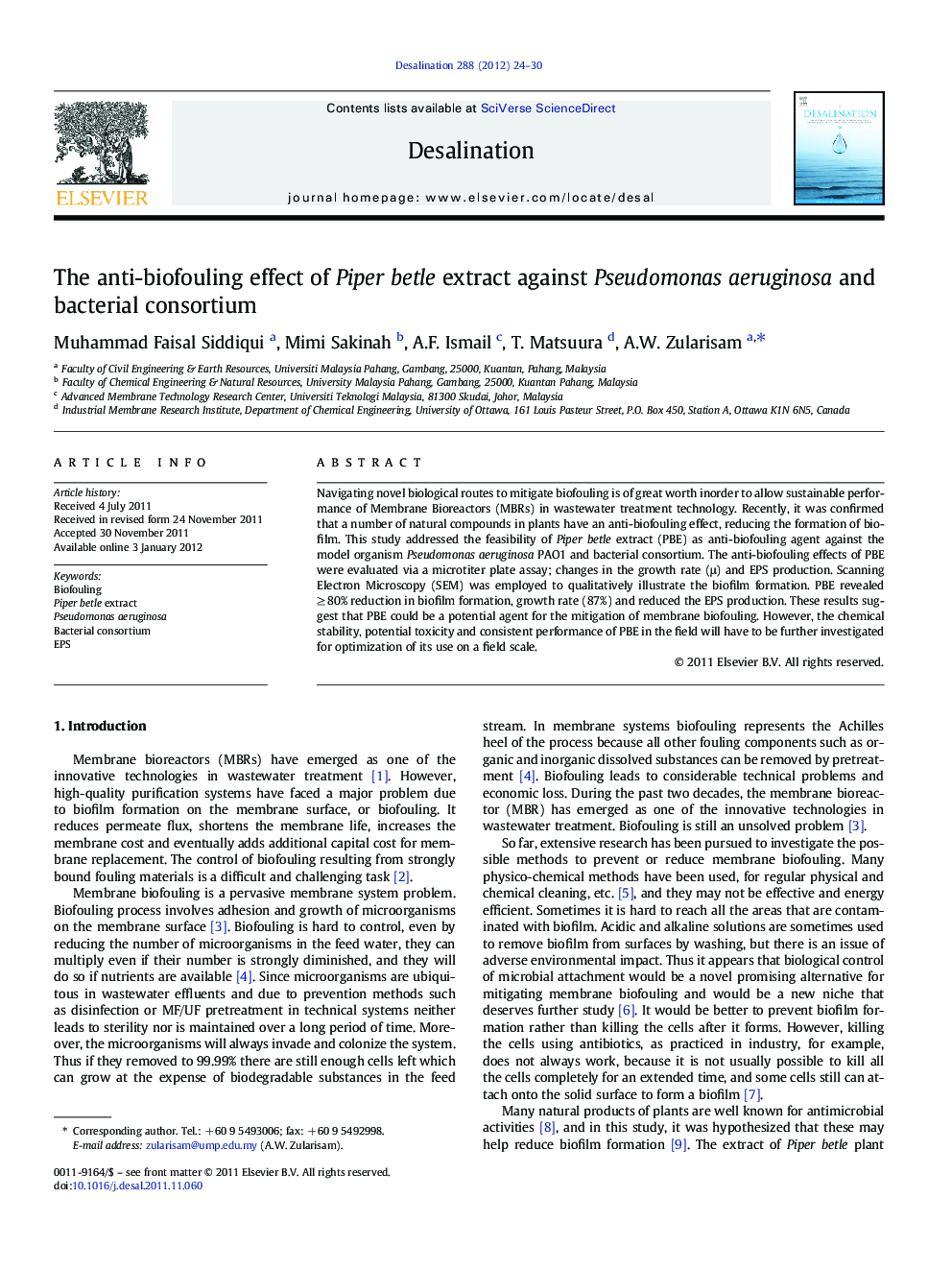| Article ID | Journal | Published Year | Pages | File Type |
|---|---|---|---|---|
| 624545 | Desalination | 2012 | 7 Pages |
Navigating novel biological routes to mitigate biofouling is of great worth inorder to allow sustainable performance of Membrane Bioreactors (MBRs) in wastewater treatment technology. Recently, it was confirmed that a number of natural compounds in plants have an anti-biofouling effect, reducing the formation of biofilm. This study addressed the feasibility of Piper betle extract (PBE) as anti-biofouling agent against the model organism Pseudomonas aeruginosa PAO1 and bacterial consortium. The anti-biofouling effects of PBE were evaluated via a microtiter plate assay; changes in the growth rate (μ) and EPS production. Scanning Electron Microscopy (SEM) was employed to qualitatively illustrate the biofilm formation. PBE revealed ≥ 80% reduction in biofilm formation, growth rate (87%) and reduced the EPS production. These results suggest that PBE could be a potential agent for the mitigation of membrane biofouling. However, the chemical stability, potential toxicity and consistent performance of PBE in the field will have to be further investigated for optimization of its use on a field scale.
► Membrane biofouling control is a difficult and challenging task. ► Anti-biofouling effect of Piper betle extract was evaluated on biofilm formation, growth rate and EPS production by Pseudomonas aeruginosa. ► PBE reduced biofilm formation, growth rate and EPS production.
